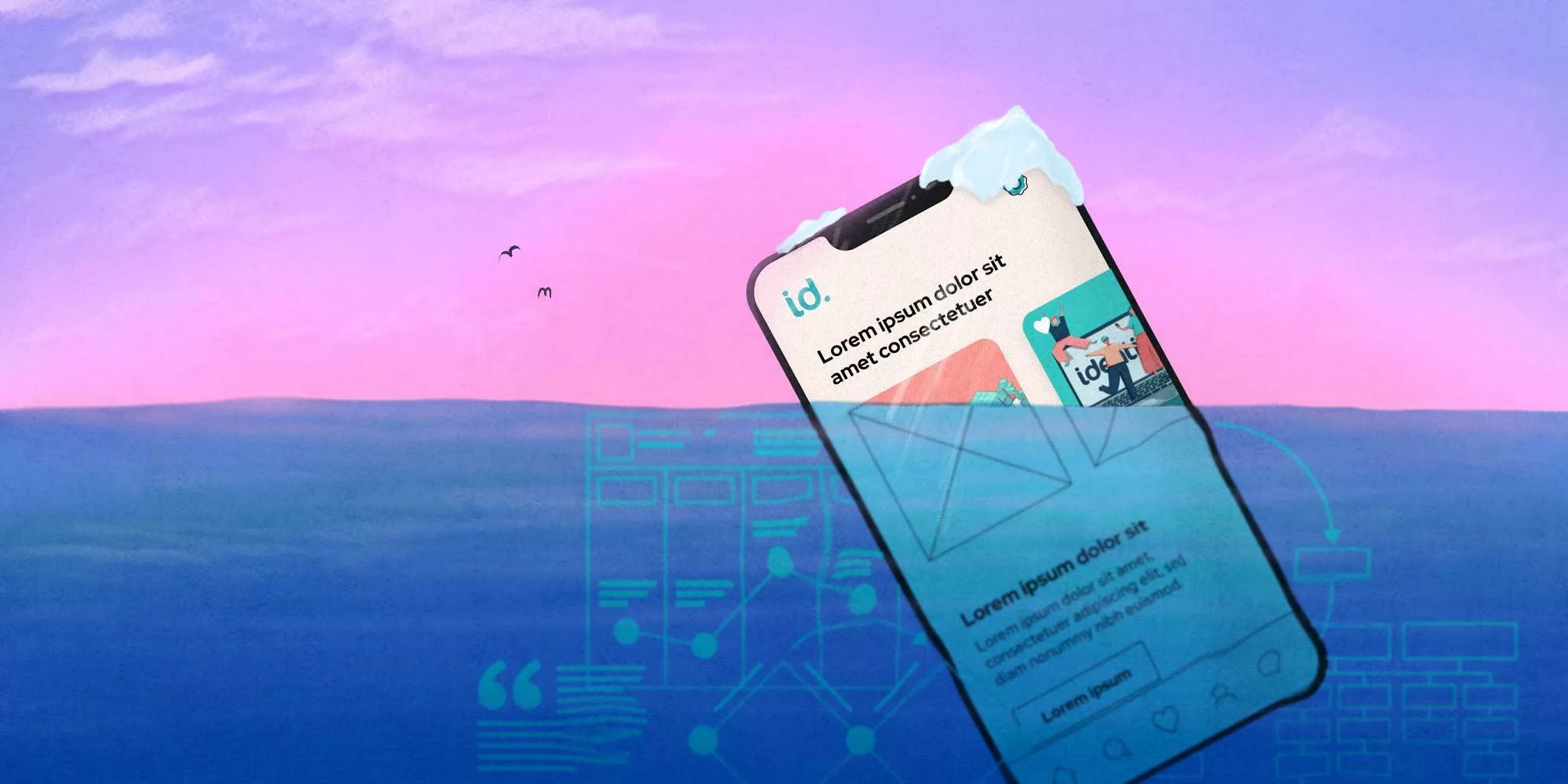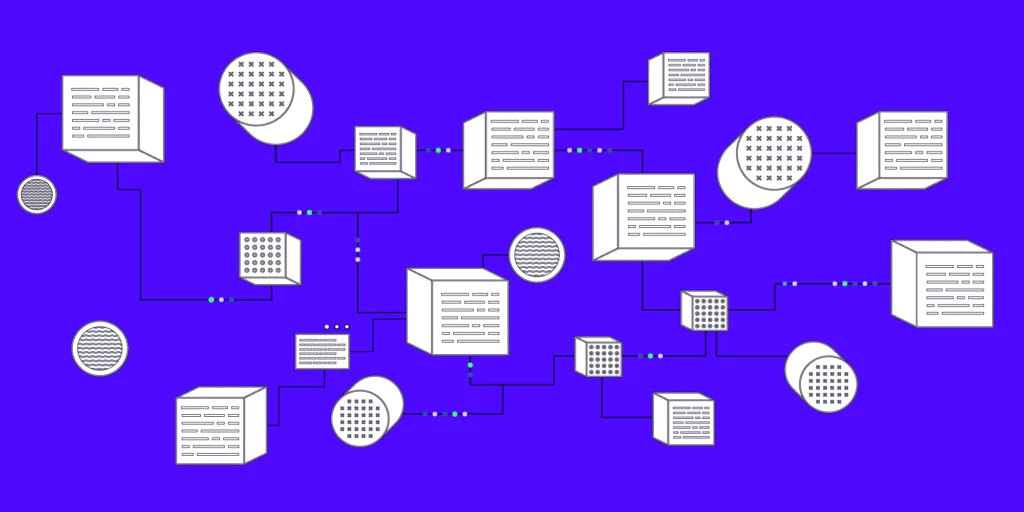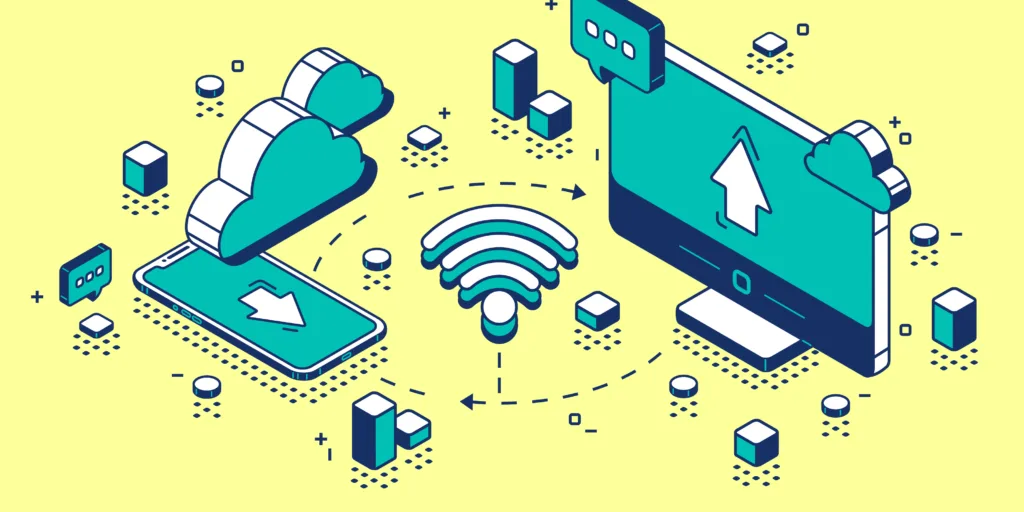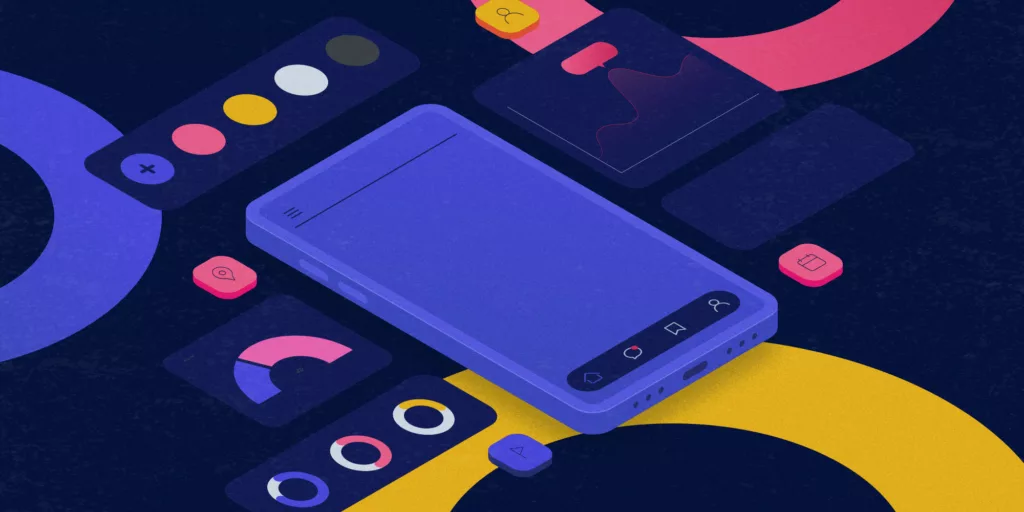You often see the abbreviations UI and UX used interchangeably or side by side. The abbreviation UI stands for “user interface,” which refers to the interface through which the user interacts with a service or product. UX, on the other hand, stands for “user experience,” which refers to the overall experience a user has when interacting with a service or product. The user interface forms a part of the overall experience that the user gets from using the service or product.
The user interface is, for example, the visible part of a website or application for the end user. Dan Saffer aptly describes the user interface in his book Designing for Interaction as the tip of the iceberg. What is visible on the surface is only a small part of a carefully designed whole.

The user interface of a website or application is built from elements such as functionality, the layout of selected components in relation to one another and the screen size, colors, typography, and illustrations. The user experience, on the other hand, is shaped not only by the user interface but also by factors such as the accessibility, usefulness of the service/product, and how and from where the user arrives at the product/service.
User interface design is an important part of user experience design, as it is often the most visible aspect of the entire process. Visual design can, for example, support the detection of important elements in the correct order and help the user interpret the interface as intended. Perhaps due to the significance of interface design, it is sometimes confused with user experience design. However, it is essential to remember that the user interface is not the only part of the user experience. A good interface cannot save a poorly designed experience, but a bad interface can easily ruin an otherwise well-designed experience. The interface can be made visually impressive and distinctive, but usability, accessibility, discoverability, and other factors that impact the overall experience must not be overshadowed.
So, when considering purchasing UX design services, remember that the price tag should include more than just a visual update to the user interface. On the other hand, when purchasing UI design, you cannot expect to solve issues that require a deeper understanding of how the overall experience is shaped. A designer’s job is to question the needs presented by the client. An experienced designer, after familiarizing themselves with the case, will be able to advise on what would be the most beneficial course of action for that specific situation.
Sources:
Saffer, D. 2005. Designing for interaction: creating smart applications and clever devices. Berkeley, CA: New Riders
Sinkkonen, I.; Nuutila, E. & Törmä, S. 2009. Helppokäyttöisen verkkopalvelun suunnittelu. Helsinki: Tietosanoma





